She was a fashion magazine photographer for almost two decades. She has shot high-end jewellery from Tiffany & Co and Chanel, It girls of each era, as well as timeless cinematic icons such as Takeshi Kaneshiro and Tony Leung.
But the 48-year-old Frenchescar Lim, founder of Six Rolling Wheels, always escaped to a secret world outside of work.
She would pack her bags and go on solo bikepacking trips overseas, carrying her tent, sleeping bag and food with her, cycling her way through seaside roads, quiet fields and villages.
Back then, options for cycling caps and bags were limited and expensive – so Lim learnt to make her own, starting with cycling caps and later, saddlebags and others.
BIKEPACKING, HELLO KITTY AND CHEONGSAMS
What do these three things have in common? Very little, it seems. But together, they inspired the creation of Lim’s cycling accessories brand.
“I started doing cycling seriously when I was studying in Vancouver in my early twenties. There was a transport strike at that time and because I couldn’t afford a car, I started to cycle to school 35km away,” Lim recalled.
After she got used to cycling long distances, the young student decided to bikepack from Vancouver in Canada to Pennsylvania in the United States. She cycled 2,500km and hitched a couple of rides to save on transport costs.
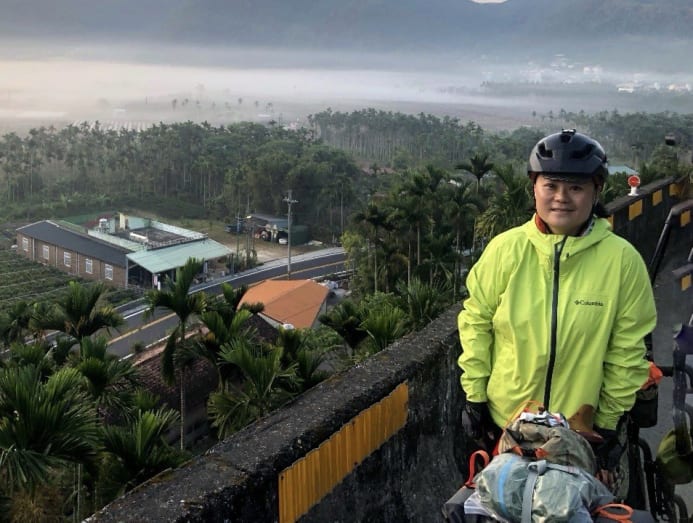
Bikepacking is a very immersive form of slow travel where you see, hear and experience cultures more fully, said Lim. (Photo: Six Rolling Wheels)
It took her two months, but she fell in love with the experience and continued to bikepack in other countries throughout her adult years.
“If you drive or take a train, you cannot experience the things that you do on a bike. You will miss the smell, the sounds and the details when you go past a paddy field, for example,” she said.
Those were the days before Taobao, and cycling helmets were expensive, Lim added.
“Because helmets have foam inside and because we sweat a lot when cycling, they degrade very fast. To make them last longer, we’d wear cycling caps to wick away the sweat. These caps also keep our hair neat when we take the helmet off,” she explained.
These are not regular caps, which have hard brims. Cycling caps have soft brims, typically made of plastic, so that they can be worn under a helmet and are easily washable, she added.

“I find a lot of peace sewing in my room. I feel very happy,” says Lim. (Photo: Six Rolling Wheels)
In the early 2000s, these hats were pricey, costing around US$70 (close to S$90).
So in 2003, when Lim’s best friend suggested joining a four-week sewing course together, Lim decided to make a cycling cap.
“Actually, I hated sewing at that point. I just wanted to spend more time with my best friend,” she laughed.
Lim used Hello Kitty fabric from Japan to make her first cap for a friend. She posted these on photo- and video-sharing platform Flickr and received two messages of interest from the US and Australia. She made two caps for these virtual acquaintances for free, only charging shipping fees.
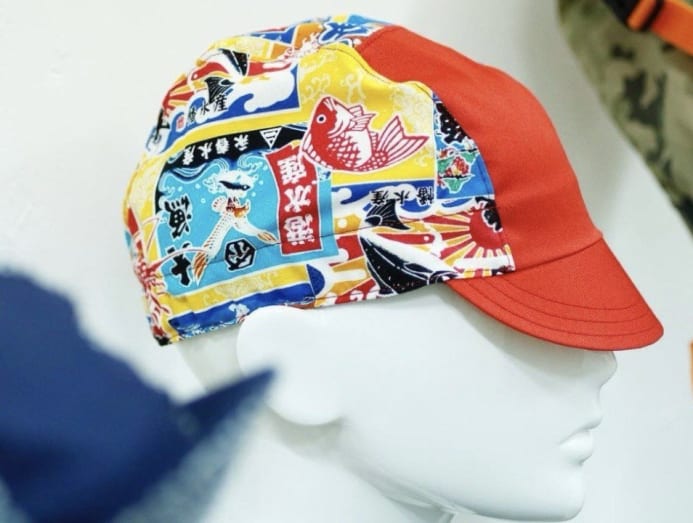
Six Rolling Wheels cycling caps are popular for their quirky prints. (Photo: Six Rolling Wheels)
Enquiries kept coming in, so Lim started selling caps to the Flickr community and work friends. Half a year later, she rented a stall at a weekend flea market to sell caps made with fabric from Japan such as sashiko print. She sold S$1,200 worth of caps over two days.
“I found a sudden interest in sewing because it was quite therapeutic. I don’t think so much when doing it, because I need to concentrate on cutting and sewing. It took me away from stress,” she said.
She kept at her side hustle, starting anInstagram page for it in 2013. That’s how her passion for bikepacking evolved into a niche brand of handmade cycling accessories Six Rolling Wheels.
When her best friend suggested a cheongsam-making course at TaF.tc fashion school in 2018, she said yes. She had no interest in cheongsams. But she figured the technical skills would be transferable.

Lim sources for fabric for her caps from Japan while those of her bags are from the United States. (Photo: Six Rolling Wheels)
“Bikepacking was not very popular then, so bikepacking bags were expensive. A saddlepack cost S$300 to S$400,” she said. A saddlepack or saddlebag attaches directly to your bicycle without the need for a rack, saving you unnecessary weight.
Lim wanted to make her own saddlebag.
During the course, she made a very crooked cheongsam that was never worn. But it taught her the fundamentals of doing measurements and pattern drafting. And after a month of experimentation, and five to six attempts, she made her first saddlebag.
PACKING FOR A BIKE TOUR
Today, Lim offers 12 different bags that can be mounted on the frame, handlebar, saddle and other parts of the bike. Her Off-Roader Bag is the brand’s most expensive and most difficult bag to make. It takes around eight hours and is priced between S$248 and S$258. Her cycling caps cost between S$32 and S$40 each and all items are available at her Six Rolling Wheels website.
Unlike a backpacker who can survive on just one good bag, bikepackers need seven to eight bags for a long trip. These carry water, food, gadgets like laptop and cameras, bike tools to replace a punctured tyre, clothes, daily necessities, a tent and a sleeping bag on the bike itself so that the cyclist carries nothing on his body, said Lim.
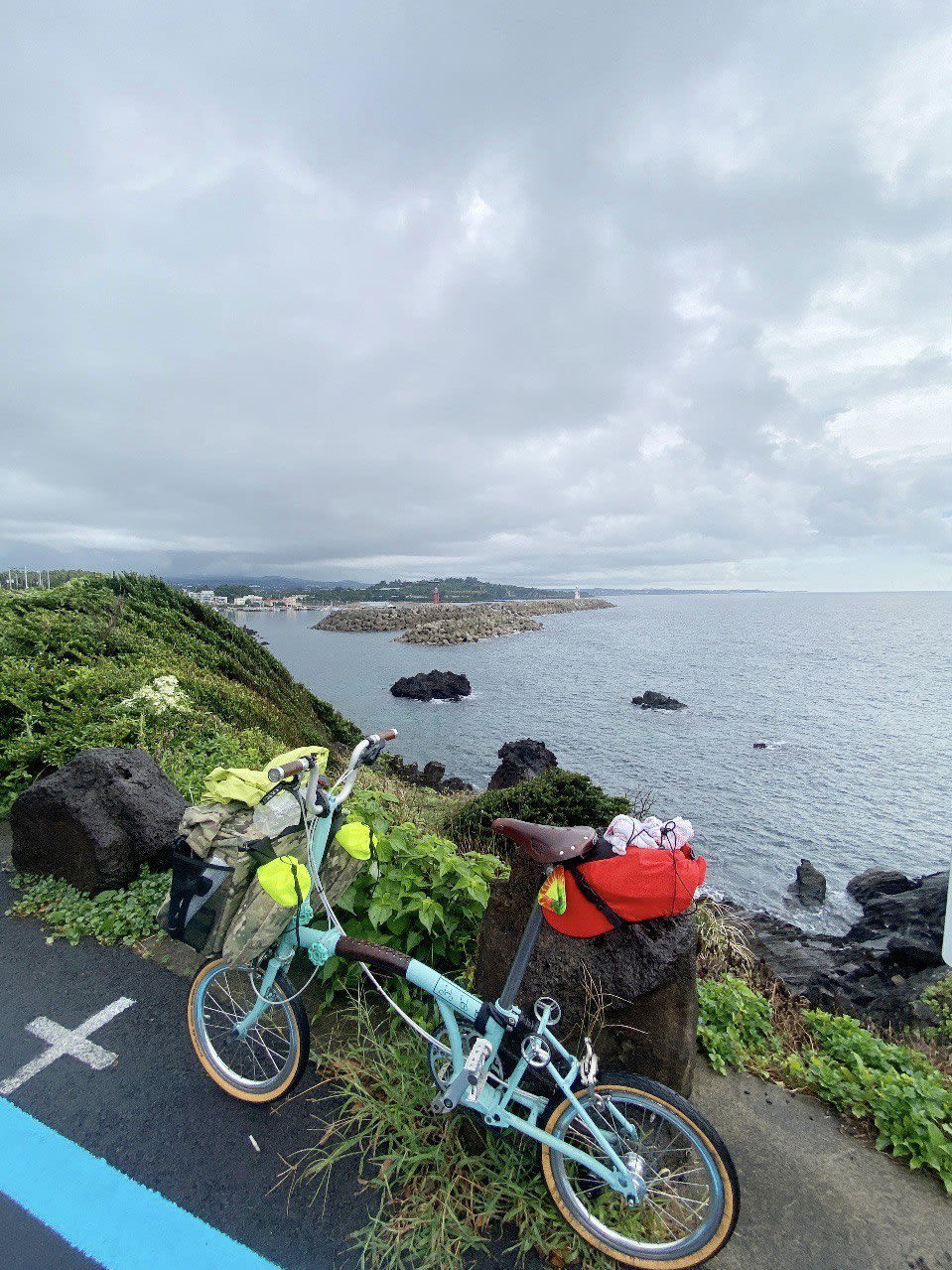
Lim typically travels with seven to eight bags on long bikepacking trips. This photo was taken at the highest point of a coastal road in Jeju, South Korea. (Photo: Six Rolling Wheels)
“Bike touring is fun but it’s not easy,” she said. “Although you may want to travel light, there are many essential items, so you need to put 20-30kg of bags on your bicycle. And you have to go uphill, downhill and ride into a headwind with them,” Lim said.
“The main reason you need so many different bags is to distribute the weight on the bicycle so that it is balanced. When you are cycling uphill and especially downhill, it can be very dangerous if you load all your things only in front because you’d be more likely to topple.”
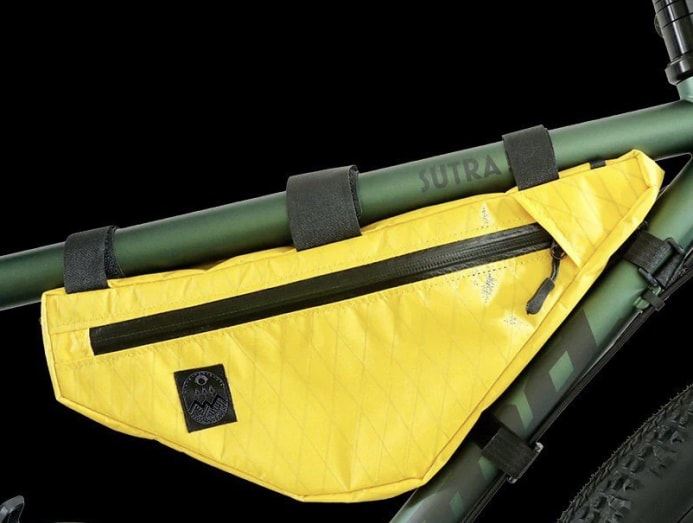
The Half-Frame Bag, S$115, can be attached to the bike frame or front of the bike - one way to use it is to store power banks to easily charge one’s phone for GPS navigation. (Photo: Six Rolling Wheels)
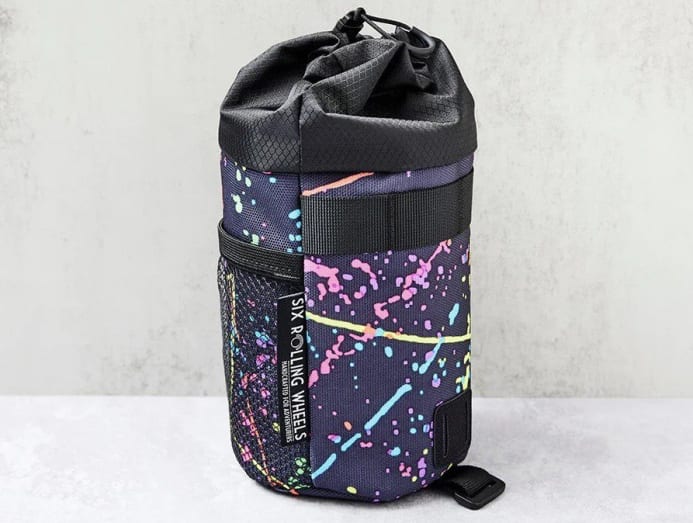
The Stem Bag, S$48, is attached to the front of the bike and stores items a cyclist needs to keep handy, such as their phone, sunglasses, water or snacks. (Photo: Six Rolling Wheels)
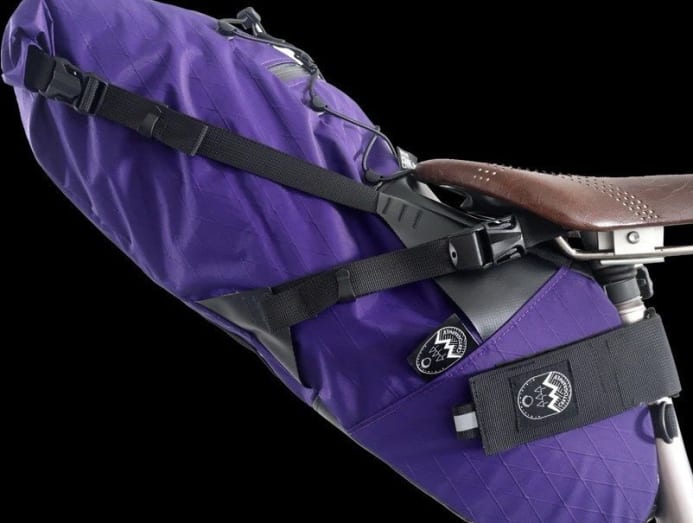
Attached to the underside of the bicycle saddle (seat), the Saddlepack, S$185, usually holds clothes and other items that cyclists won’t need until the end of the bikepacking day. (Photo: Six Rolling Wheels)
Different bags also have different purposes. For instance, it would make sense to stow power banks on the bike frame so that you can easily pull out the attached wire to recharge your phone without stopping, Lim said.
Hence, a good bikepacking bag should be lightweight, easy to strap on and take off, and stable when strapped onto the bike. “If it is not stable, you will have to keep worrying if it will drop off. If it wriggles a lot, it can also affect your riding and that is dangerous,” Lim added.
She also ensures that her products won’t scratch the bike frame, because many cycling enthusiasts spend as much as S$5,000 to $6,000 on their bike.
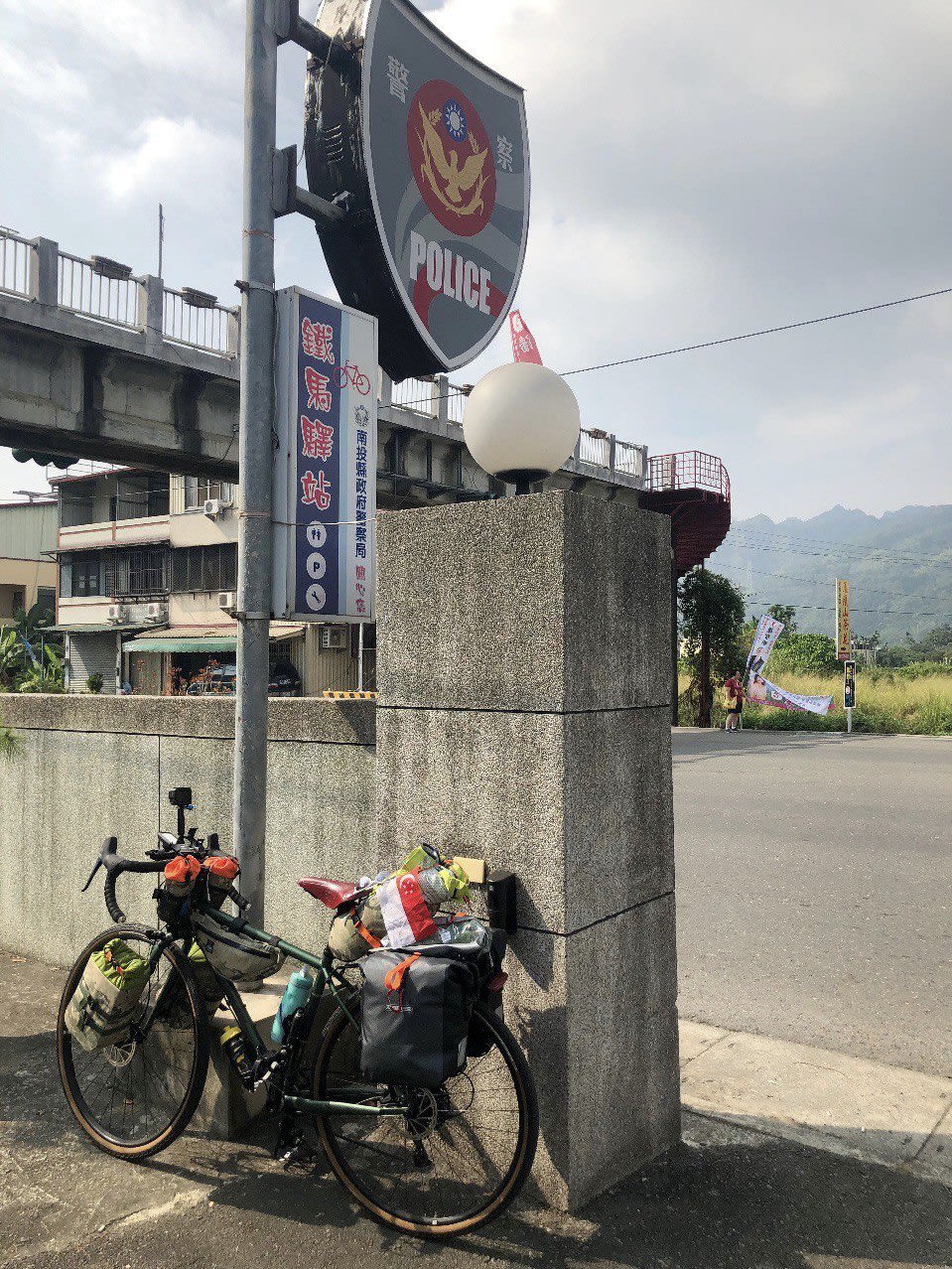
In Taiwan, Lim could not book a hostel in time and ended up spending the night at a police station in Taitung where the friendly policemen treated her to braised pork rice. (Photo: Six Rolling Wheels)
Currently a freelance photographer, Lim leans towards bolder colours and colour blocking in her designs, unlike the typical blacks and greys of other brands. Customers can opt for colour customisation without extra cost, or design customisation with additional charges.
It is a labour of love. Lim told CNA Women that cycling will always have a special place in her heart because it reminds her of her late mother who passed away when Lim was 18. “My mum was the one who taught me to cycle, and we used to cycle from our kampung to buy groceries or get haircuts,” she reminisced.
Though it is a world apart from shooting for fashion magazines, sewing also appeals deeply to the introvert in Lim. “I find a lot of peace sewing in my room. I feel very happy,” she said.
CNA Women is a section on CNA Lifestyle that seeks to inform, empower and inspire the modern woman. If you have women-related news, issues and ideas to share with us, email CNAWomen [at] mediacorp.com.sg.
Continue reading...
But the 48-year-old Frenchescar Lim, founder of Six Rolling Wheels, always escaped to a secret world outside of work.
She would pack her bags and go on solo bikepacking trips overseas, carrying her tent, sleeping bag and food with her, cycling her way through seaside roads, quiet fields and villages.
Back then, options for cycling caps and bags were limited and expensive – so Lim learnt to make her own, starting with cycling caps and later, saddlebags and others.
BIKEPACKING, HELLO KITTY AND CHEONGSAMS
What do these three things have in common? Very little, it seems. But together, they inspired the creation of Lim’s cycling accessories brand.
“I started doing cycling seriously when I was studying in Vancouver in my early twenties. There was a transport strike at that time and because I couldn’t afford a car, I started to cycle to school 35km away,” Lim recalled.
After she got used to cycling long distances, the young student decided to bikepack from Vancouver in Canada to Pennsylvania in the United States. She cycled 2,500km and hitched a couple of rides to save on transport costs.

Bikepacking is a very immersive form of slow travel where you see, hear and experience cultures more fully, said Lim. (Photo: Six Rolling Wheels)
It took her two months, but she fell in love with the experience and continued to bikepack in other countries throughout her adult years.
“If you drive or take a train, you cannot experience the things that you do on a bike. You will miss the smell, the sounds and the details when you go past a paddy field, for example,” she said.
Those were the days before Taobao, and cycling helmets were expensive, Lim added.
“Because helmets have foam inside and because we sweat a lot when cycling, they degrade very fast. To make them last longer, we’d wear cycling caps to wick away the sweat. These caps also keep our hair neat when we take the helmet off,” she explained.
These are not regular caps, which have hard brims. Cycling caps have soft brims, typically made of plastic, so that they can be worn under a helmet and are easily washable, she added.

“I find a lot of peace sewing in my room. I feel very happy,” says Lim. (Photo: Six Rolling Wheels)
In the early 2000s, these hats were pricey, costing around US$70 (close to S$90).
So in 2003, when Lim’s best friend suggested joining a four-week sewing course together, Lim decided to make a cycling cap.
“Actually, I hated sewing at that point. I just wanted to spend more time with my best friend,” she laughed.
Lim used Hello Kitty fabric from Japan to make her first cap for a friend. She posted these on photo- and video-sharing platform Flickr and received two messages of interest from the US and Australia. She made two caps for these virtual acquaintances for free, only charging shipping fees.

Six Rolling Wheels cycling caps are popular for their quirky prints. (Photo: Six Rolling Wheels)
Enquiries kept coming in, so Lim started selling caps to the Flickr community and work friends. Half a year later, she rented a stall at a weekend flea market to sell caps made with fabric from Japan such as sashiko print. She sold S$1,200 worth of caps over two days.
“I found a sudden interest in sewing because it was quite therapeutic. I don’t think so much when doing it, because I need to concentrate on cutting and sewing. It took me away from stress,” she said.
She kept at her side hustle, starting anInstagram page for it in 2013. That’s how her passion for bikepacking evolved into a niche brand of handmade cycling accessories Six Rolling Wheels.
When her best friend suggested a cheongsam-making course at TaF.tc fashion school in 2018, she said yes. She had no interest in cheongsams. But she figured the technical skills would be transferable.

Lim sources for fabric for her caps from Japan while those of her bags are from the United States. (Photo: Six Rolling Wheels)
“Bikepacking was not very popular then, so bikepacking bags were expensive. A saddlepack cost S$300 to S$400,” she said. A saddlepack or saddlebag attaches directly to your bicycle without the need for a rack, saving you unnecessary weight.
Lim wanted to make her own saddlebag.
During the course, she made a very crooked cheongsam that was never worn. But it taught her the fundamentals of doing measurements and pattern drafting. And after a month of experimentation, and five to six attempts, she made her first saddlebag.
PACKING FOR A BIKE TOUR
Today, Lim offers 12 different bags that can be mounted on the frame, handlebar, saddle and other parts of the bike. Her Off-Roader Bag is the brand’s most expensive and most difficult bag to make. It takes around eight hours and is priced between S$248 and S$258. Her cycling caps cost between S$32 and S$40 each and all items are available at her Six Rolling Wheels website.
Unlike a backpacker who can survive on just one good bag, bikepackers need seven to eight bags for a long trip. These carry water, food, gadgets like laptop and cameras, bike tools to replace a punctured tyre, clothes, daily necessities, a tent and a sleeping bag on the bike itself so that the cyclist carries nothing on his body, said Lim.

Lim typically travels with seven to eight bags on long bikepacking trips. This photo was taken at the highest point of a coastal road in Jeju, South Korea. (Photo: Six Rolling Wheels)
“Bike touring is fun but it’s not easy,” she said. “Although you may want to travel light, there are many essential items, so you need to put 20-30kg of bags on your bicycle. And you have to go uphill, downhill and ride into a headwind with them,” Lim said.
“The main reason you need so many different bags is to distribute the weight on the bicycle so that it is balanced. When you are cycling uphill and especially downhill, it can be very dangerous if you load all your things only in front because you’d be more likely to topple.”

The Half-Frame Bag, S$115, can be attached to the bike frame or front of the bike - one way to use it is to store power banks to easily charge one’s phone for GPS navigation. (Photo: Six Rolling Wheels)

The Stem Bag, S$48, is attached to the front of the bike and stores items a cyclist needs to keep handy, such as their phone, sunglasses, water or snacks. (Photo: Six Rolling Wheels)

Attached to the underside of the bicycle saddle (seat), the Saddlepack, S$185, usually holds clothes and other items that cyclists won’t need until the end of the bikepacking day. (Photo: Six Rolling Wheels)
Different bags also have different purposes. For instance, it would make sense to stow power banks on the bike frame so that you can easily pull out the attached wire to recharge your phone without stopping, Lim said.
Hence, a good bikepacking bag should be lightweight, easy to strap on and take off, and stable when strapped onto the bike. “If it is not stable, you will have to keep worrying if it will drop off. If it wriggles a lot, it can also affect your riding and that is dangerous,” Lim added.
She also ensures that her products won’t scratch the bike frame, because many cycling enthusiasts spend as much as S$5,000 to $6,000 on their bike.

In Taiwan, Lim could not book a hostel in time and ended up spending the night at a police station in Taitung where the friendly policemen treated her to braised pork rice. (Photo: Six Rolling Wheels)
Currently a freelance photographer, Lim leans towards bolder colours and colour blocking in her designs, unlike the typical blacks and greys of other brands. Customers can opt for colour customisation without extra cost, or design customisation with additional charges.
It is a labour of love. Lim told CNA Women that cycling will always have a special place in her heart because it reminds her of her late mother who passed away when Lim was 18. “My mum was the one who taught me to cycle, and we used to cycle from our kampung to buy groceries or get haircuts,” she reminisced.
Though it is a world apart from shooting for fashion magazines, sewing also appeals deeply to the introvert in Lim. “I find a lot of peace sewing in my room. I feel very happy,” she said.
CNA Women is a section on CNA Lifestyle that seeks to inform, empower and inspire the modern woman. If you have women-related news, issues and ideas to share with us, email CNAWomen [at] mediacorp.com.sg.
Continue reading...


